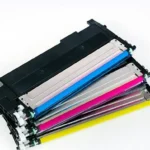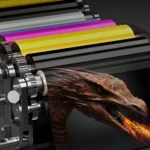The Deliver 9 is one of those vans that just works out of the box—decent cargo space, reasonable fuel economy, and enough reliability to not keep you up at night worrying about breakdowns. But if you’re using it for actual work or even regular hauling, the stock setup leaves some obvious gaps. Little things start to bug you after a few months. Maybe it’s the lack of places to put stuff in the cabin, or how the cargo area becomes chaos after a few stops, or just realizing you need better protection for the paint and panels. That’s where smart ldv deliver 9 accessories come into play. We’re not talking about flashy nonsense here—these are practical additions that solve real problems and make the van work better for how you actually use it every day.
Protection and Durability Enhancements
The first thing that takes a beating on any work van is the cargo area floor. Rubber matting or heavy-duty vinyl flooring protects the metal underneath from scratches, dents, and rust from water or chemicals. It also makes cleanup way easier when you inevitably spill something or track in mud. Anti-slip textures are crucial too—nothing worse than cargo sliding forward under braking.
Rubbing strips or body molding along the sides might seem like overkill until you ding the van on a tight loading dock or narrow alley. These plastic or rubber strips absorb minor impacts that would otherwise leave permanent marks. They’re cheap insurance, especially if you’re parking in crowded commercial areas regularly. Rear bumper protectors serve the same purpose and they really do prevent those annoying scratches from loading and unloading.
Interior Cabin Upgrades
The Deliver 9 cabin is pretty bare bones, which is fine for keeping costs down but not great for daily comfort. Custom-fit floor mats are an obvious first addition—the carpet underneath wasn’t meant to handle dirt and water day after day. All-weather rubber mats trap moisture and debris, and you can pull them out to hose off when they get gross.
Seat covers aren’t just about keeping the original upholstery clean, though that’s part of it. Quality covers with padding add comfort on long drives, and waterproof options make sense if you’re working outdoors or in messy conditions. Canvas or neoprene materials hold up better than the cheap universal ones you see at gas stations.
Dash cams have become basically standard for commercial vehicles at this point. They protect you in accident disputes, but they’re also useful for monitoring driver behavior if you have employees using the van. Dual-channel setups that record both front and rear are worth the extra money, especially in parking lot situations where people love to back into you and drive off.
Cargo Management Systems
Empty cargo space is wasted potential. Tie-down points and cargo nets are basic additions that prevent stuff from shifting around. The Deliver 9 has some factory anchor points but adding extra D-rings along the walls gives you way more flexibility for securing different load types.
Shelving units designed specifically for van dimensions make a huge difference if you’re carrying tools, parts, or organized inventory. These aren’t the flimsy wire shelves from a home improvement store—commercial van shelving is built to handle weight and vibration without falling apart. Most systems are modular, so you can reconfigure them as your needs change.
For those doing deliveries or carrying valuable equipment, lockable storage boxes bolted to the floor keep things secure when you can’t watch the van. Partition barriers between the cabin and cargo area aren’t just organizational—they prevent loose items from becoming dangerous in sudden stops. Some also have pass-through hatches for accessing long items like pipes or lumber.
Technology and Convenience Add-Ons
Reverse cameras should honestly be standard on all vans, but since they’re not always included, adding one is pretty straightforward. Wireless kits are available now that don’t require running cables through the entire vehicle. The visibility improvement alone is worth it, never mind the reduced insurance claims from backing accidents.
USB charging ports and 12V power outlets in the cargo area seem minor until you need them. If you’re running power tools, inflators, or mobile devices while working, having power back there saves a lot of hassle. Some people install full inverters for running AC-powered equipment, which opens up all kinds of possibilities for mobile work setups.
Roof racks or ladder racks transform the Deliver 9’s capabilities for anyone in trades. They get bulky items off the interior cargo space and create room for materials that won’t fit inside. Just make sure whatever you install is properly rated for the weight you’re planning to carry—cheap racks fail catastrophically and it’s not worth the risk.
Lighting Improvements
The factory reverse lights and cargo area lighting on most vans are borderline useless. LED replacement bulbs are a cheap upgrade that makes nighttime loading and unloading actually possible. For the cargo area, battery-powered LED strips with motion sensors can be mounted along the ceiling or walls without any complicated wiring.
If you’re working on job sites or doing early morning or late evening deliveries, auxiliary lighting on the front or roof makes sense. LED light bars have gotten affordable and they draw minimal power compared to older halogen options.
Also read-Customer Segmentation Models That Drive Retention in Fintech



